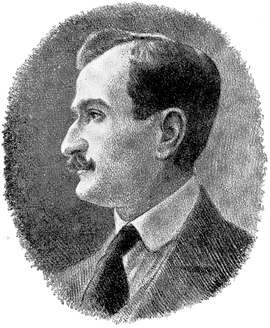Traian Vuia
| Traian Vuia | |
|---|---|
 |
|
| Born |
August 17, 1872 Surducul-Mic, Austro-Hungarian Empire (now Traian Vuia, Romania) |
| Died | September 3, 1950 (aged 78) Bucharest, Romania |
| Nationality | Romanian |
| Occupation | Inventor |
| Known for | Early flying machine |
Traian Vuia or Trajan Vuia (Romanian pronunciation: [traˈjan ˈvuja]; August 17, 1872 – September 3, 1950) was a Romanian inventor and aviation pioneer who designed, built and tested a tractor configuration monoplane. He was the first to demonstrate that a flying apparatus could rise into the air by running upon wheels on an ordinary road. He is credited with a powered hop of 11 metres (36 feet) made on March 18, 1906 and he later claimed a powered hop of 24 metres (79 feet). Though unsuccessful in sustained flight, Vuia's invention influenced Louis Blériot in designing monoplanes. Later, Vuia also designed helicopters.
A French citizen from 1918, Vuia led the Romanians (especially Transylvanians) of France in the Resistance during World War II. He returned to Romania just before his death in 1950.
Vuia was born to Romanian parents Simion Popescu and Ana Vuia living in Surducul-Mic, a village in the Banat region, Austro-Hungarian Empire, today in Romania; the place is now called Traian Vuia. After graduating from high school in Lugoj, in 1892, he enrolled in the School of Mechanics at the Polytechnic University of Budapest where he received his engineering diploma. He then joined the Faculty of Law in Budapest, Hungary, where he earned a Ph.D. in law in May 1901 with the thesis "Military and Industry, State and Contract regime".
He returned to Lugoj, where he studied the problem of human flight and designed his first flying machine, which he called the "airplane-car". He attempted to build the machine, but due to financial constraints decided to go to Paris in July 1902, hoping to find someone interested in financing his project, possibly balloon enthusiasts. He met with considerable skepticism from people who believed that a heavier-than-air machine could not fly. He then visited Victor Tatin, the well-known theoretician and experimenter who had built an aircraft model which flew in 1879. Tatin was interested in the project, but doubted that Vuia had a suitable engine or that his aircraft would be stable. Vuia then presented his plan to the Académie des Sciences in Paris on February 16, 1903, but was rejected with the comment: "The problem of flight with a machine which weighs more than air can not be solved and it is only a dream."
...
Wikipedia
